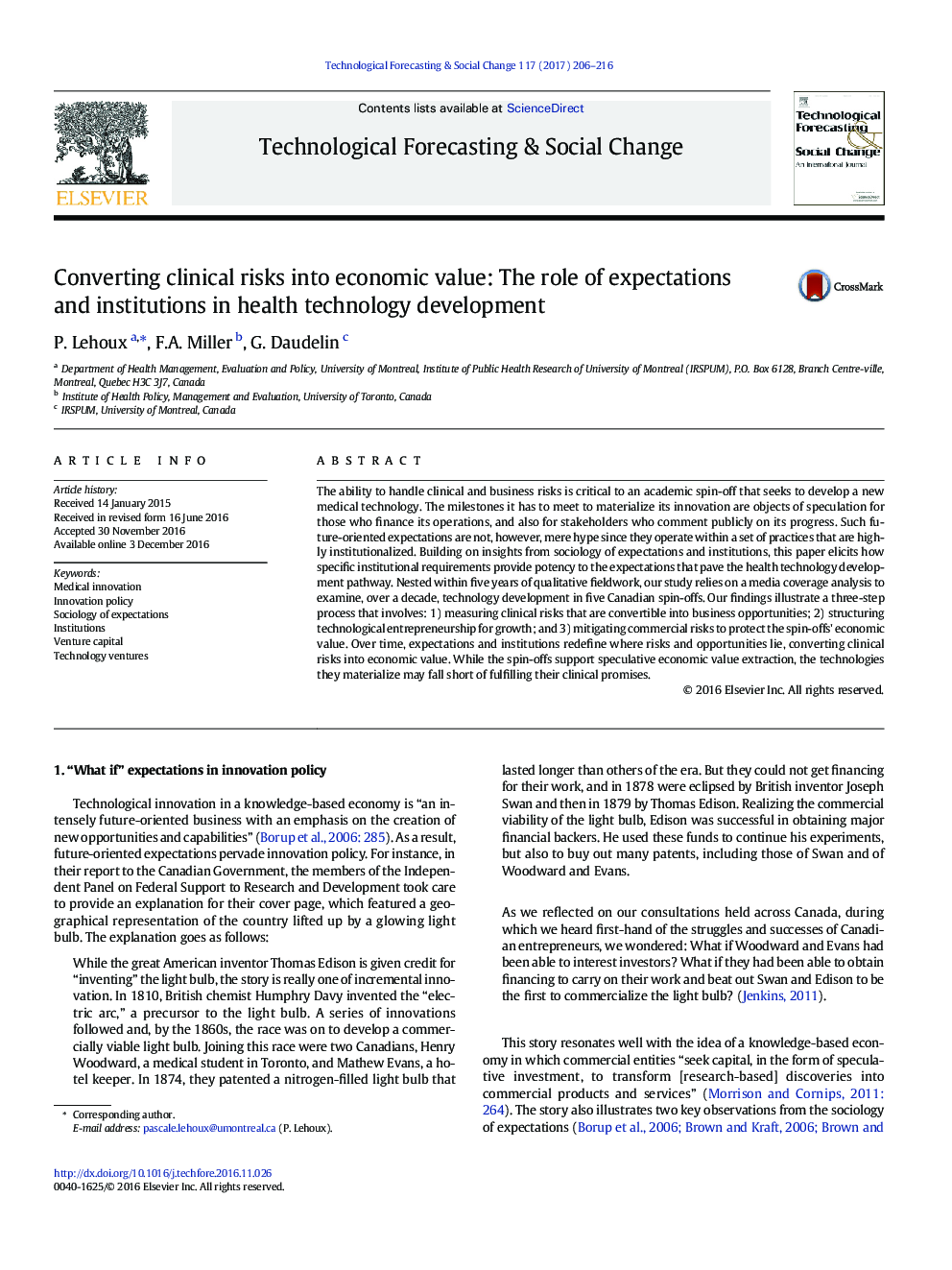| Article ID | Journal | Published Year | Pages | File Type |
|---|---|---|---|---|
| 5036906 | Technological Forecasting and Social Change | 2017 | 11 Pages |
â¢Expectations about innovations operate within highly institutionalized practices.â¢Institutional requirements give force to future-oriented expectations.â¢Negative expectations (risks) are converted into positive ones (opportunities).
The ability to handle clinical and business risks is critical to an academic spin-off that seeks to develop a new medical technology. The milestones it has to meet to materialize its innovation are objects of speculation for those who finance its operations, and also for stakeholders who comment publicly on its progress. Such future-oriented expectations are not, however, mere hype since they operate within a set of practices that are highly institutionalized. Building on insights from sociology of expectations and institutions, this paper elicits how specific institutional requirements provide potency to the expectations that pave the health technology development pathway. Nested within five years of qualitative fieldwork, our study relies on a media coverage analysis to examine, over a decade, technology development in five Canadian spin-offs. Our findings illustrate a three-step process that involves: 1) measuring clinical risks that are convertible into business opportunities; 2) structuring technological entrepreneurship for growth; and 3) mitigating commercial risks to protect the spin-offs' economic value. Over time, expectations and institutions redefine where risks and opportunities lie, converting clinical risks into economic value. While the spin-offs support speculative economic value extraction, the technologies they materialize may fall short of fulfilling their clinical promises.
